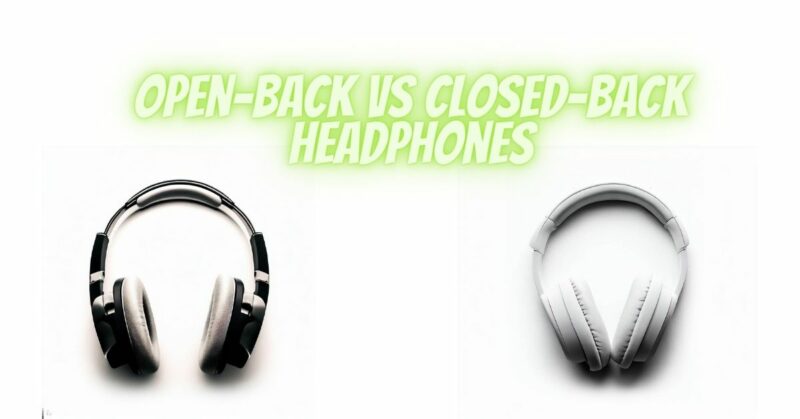Headphones have become an integral part of our daily lives, providing a personal and immersive listening experience. When selecting headphones, one of the key considerations is whether to choose open-back or closed-back models. Each type offers distinct advantages and sound characteristics that can significantly impact your audio experience. In this article, we delve into the realm of headphone technology, comparing open-back and closed-back headphones to help you find the perfect pair for your auditory journey.
- Open-Back Headphones: Immersive Soundstage and Airiness
Open-back headphones are characterized by perforated ear cups or grilles on the back of the ear cups, allowing air and sound to freely pass through. This design creates an open acoustic environment, enabling a more natural and spacious soundstage.
The primary advantage of open-back headphones lies in their ability to provide a wide and immersive soundstage. The open design allows the sound to disperse both inside and outside the ear cups, resulting in a more expansive and three-dimensional audio experience. Open-back headphones excel in reproducing a sense of depth and separation between instruments, making them popular among audiophiles and those seeking a more realistic and immersive listening experience.
Additionally, the open design of the ear cups facilitates better airflow, reducing heat and minimizing the build-up of pressure around the ears. This feature can enhance comfort during extended listening sessions, making open-back headphones suitable for critical listening or home listening environments.
- Closed-Back Headphones: Isolation and Enhanced Bass Response
Closed-back headphones feature solid ear cup enclosures, effectively isolating the listener from external noise and preventing sound leakage. The closed design creates a controlled acoustic environment, resulting in improved noise isolation and a more focused audio presentation.
One of the key advantages of closed-back headphones is their ability to provide excellent noise isolation. The closed ear cup design blocks external sounds, allowing you to focus on the music without distractions. This isolation makes closed-back headphones ideal for use in noisy environments, such as commuting or recording studios, where minimizing external noise interference is crucial.
Furthermore, closed-back headphones often exhibit enhanced bass response compared to open-back models. The sealed ear cup design restricts the air movement, leading to tighter and more impactful bass reproduction. This characteristic makes closed-back headphones popular among bass enthusiasts and individuals who prefer a more prominent low-end presence in their audio.
Conclusion:
Choosing between open-back and closed-back headphones depends on your specific needs, listening preferences, and usage scenarios. Open-back headphones excel in providing an expansive and immersive soundstage, allowing for a natural and detailed audio presentation. They are well-suited for critical listening, home listening, and situations where a spacious and realistic sound reproduction is desired.
Closed-back headphones prioritize noise isolation and enhanced bass response. They excel in environments where external noise needs to be minimized, making them suitable for commuting, recording, or situations where focused audio reproduction is crucial.
Ultimately, the decision between open-back and closed-back headphones comes down to your personal preferences, the listening environment, and the desired audio characteristics. Consider your priorities in terms of soundstage, noise isolation, comfort, and bass response to choose the headphones that best align with your auditory aspirations.


